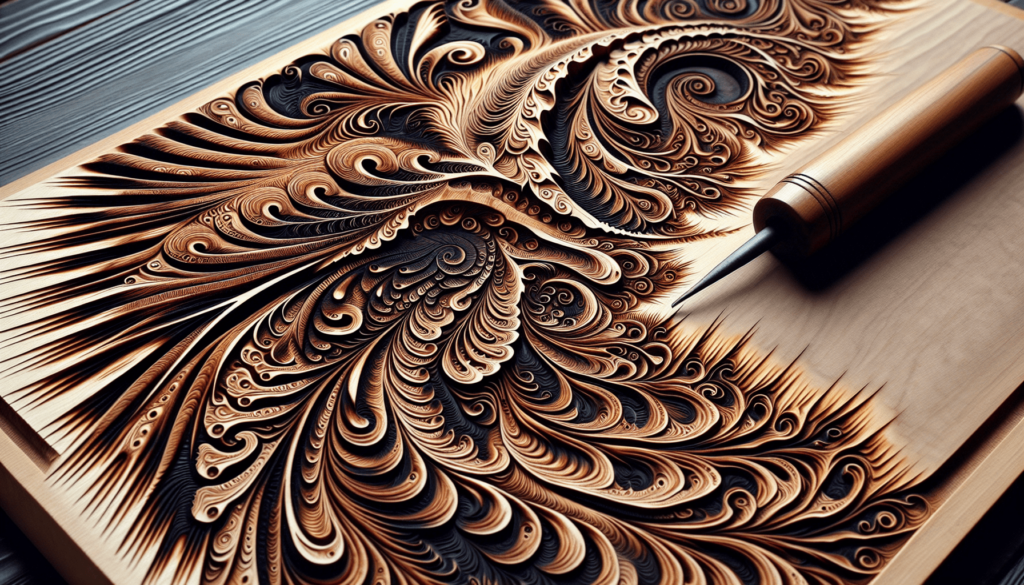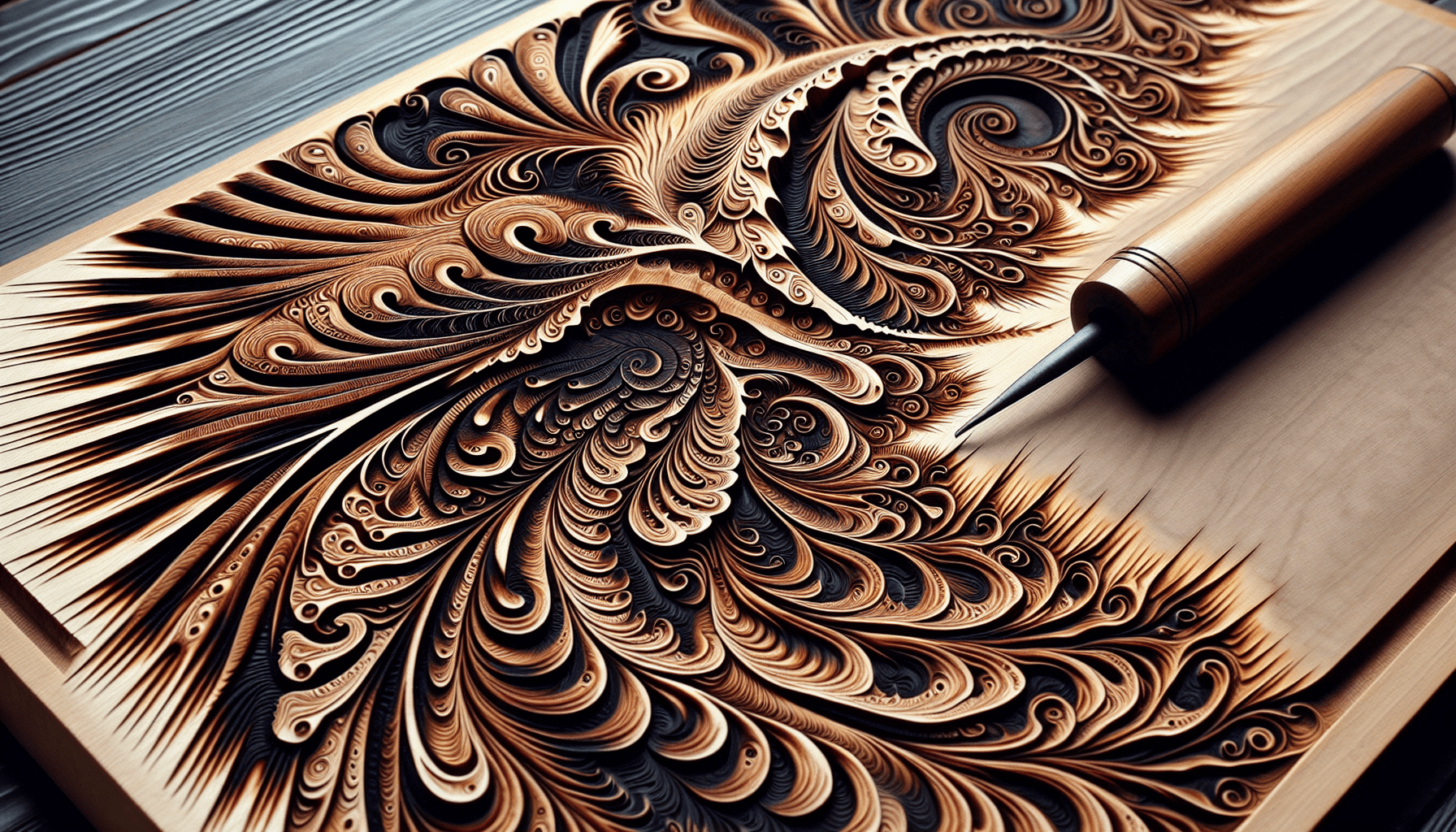There’s something almost magical about transforming a plain piece of wood into a work of art using nothing but heat. The term for woodburning is “pyrography,” and it has always fascinated me. Pyrography, from the Greek words “pur” (fire) and “graphos” (writing), is the art of creating designs on wood surfaces by burning them with a heated tool. This ancient technique not only demands precision but also a touch of creativity, allowing artists to craft intricate patterns and illustrations that stand the test of time. Have you ever stumbled upon a beautiful piece of artwork on wood, with intricate lines that seem to tell a story all on their own? Maybe you wondered how the artist managed to create something so detailed and delicate, only to find yourself even more baffled when you learned they did it all by burning the wood. It’s an ancient art form, but there’s a specific term for it that you might not be aware of.
What Is The Term For Woodburning?
Get ready for a little vocabulary lesson, my curious friend, because the term for woodburning is “pyrography.” Don’t feel bad if you couldn’t quite put your finger on it; it’s not a word you hear every day. Pyrography comes from the Greek words “pur” (fire) and “graphos” (writing), literally translating to “writing with fire.” Pretty fitting, don’t you think? When I first heard it, I imagined a whimsical ancient storyteller etching tales into wooden planks by firelight, which, shockingly, isn’t far from the truth.
The Magical Origins of Pyrography
Alright, let’s go on a little historical trip. Pyrography dates back to the dawn of time—or, well, at least to the pre-historic age. Ancient cultures, including the Egyptians and Africans, used this technique for both artistic purposes and to brand their livestock. Think about it: how else were they to leave their mark in a time before Sharpies and sticky notes?
Even the Chinese from the Han Dynasty practiced a form of pyrography, albeit using a heat tool powered by plants. Imagine creating intricate designs with something that wasn’t even plugged into a wall or powered by a battery. That’s some dedication, right? Fast forward a few centuries, and the Victorian era in England made pyrography the “it” hobby. Society women and gents would gather around, creating exquisite household items—picture frames, hand mirrors, and even furniture—adorned with delicate burn marks.
The Joys of Pyrography for the Modern Maker
So, why should you care about pyrography in the 21st century? Firstly, because it’s an incredibly versatile craft. Whether your artistic portfolio includes stick figures or Renaissance-like portraits, pyrography allows you to bring your creative visions to life—or wood, as it were.
Now, in a world where everything’s digital, there’s something almost meditative about working with your hands, channeling your inner artisan. I have to tell you, there’s a unique sense of satisfaction in creating something beautiful, one entire burn mark at a time.
Tools of the Trade: What You’ll Need
You’re intrigued, aren’t you? If you look around and decide to dabble in pyrography, you’ll need a few things to start. Think of this as your beginner’s toolkit.
| Tool | Description |
|---|---|
| Pyrography Pen | Your main tool. Modern pyrography pens resemble soldering irons and come with interchangeable tips for various effects. |
| Wood Pieces | The canvas of your choice. Poplar, basswood, and birch ply are the wood types often recommended for beginners. |
| Patterns | Tracing patterns onto your wood piece ensures your design is proportional and well-placed. You can DIY or download them. |
| Sandpaper | A smooth surface is crucial, so sand your wood before burning your design. 220 grit usually does the trick. |
| Safety Gear | Gloves and a ventilated workspace are essential. After all, burning wood can release harmful fumes. Safety first! |

The Science Behind It: How Pyrography Works
Ready for a quick science lesson? Pyrography works on a very simple principle: applying heat to wood causes a chemical change. When you press a hot tool against wood, it essentially scorches the surface, leaving behind a burn mark. The depth, thickness, and shade of the burn mark depend on the temperature and the pressure applied. It’s a delicate dance between fire and wood, reminiscent of an age-old romance.
Tips for Beginners: Getting Started
I’m a firm believer in diving head-first into new hobbies, but a few tips can make the plunge less intimidating. Trust me, no one needs their first project to look like a campfire mishap. Here’s some practical advice:
- Start Simple: Don’t begin with a Van Gogh-like masterpiece. Try basic shapes and lines to get a feel for the pen.
- Practice Patience: Pyrography is not a race; it’s more like a marathon. The key is steady, consistent movements.
- Mind the Heat: Different wood types burn at different rates. Experiment with scrap pieces to find your sweet spot.
- Use Patterns: Tracing patterns onto the wood can help maintain proportions and angles, sort of like a guide to your creativity.
- Ventilation is Key: Always, and I mean always ensure you have proper ventilation. I cannot stress the importance of this for your lungs and general well-being.
Advanced Techniques: Taking It to the Next Level
Once you’ve got the basics down and perhaps a few completed projects under your belt, you might feel ready to tackle something more advanced. Let’s delve into the techniques that separate the hobbyists from the pros.
Shading and Detailing
Shading can add a rich depth to your designs. Experiment with varying pressures and temperatures to achieve different shades. Some artists even use different pyrography pen tips to create delicate textures, much like a painter uses different brush types.
Color and Paint
Yes, you can actually add color to your woodburned piece! Once you’ve burned your design, wood-compatible paints can be used to enhance the artwork. It’s like coloring inside the lines, but the lines are burn marks, and you’re coloring with something far more permanent than crayon.
Mixed Media
For the daring creatives, combining pyrography with other crafts like carving, inlay, or even resin work can lead to stunning results. Imagine a burned design highlighted by glimmers of inlaid precious stones or encased in glossy resin. The sky’s the limit!

My Personal Pyrography Adventure
Let me share a little bit about my foray into this fiery art form. I was initially intrigued when I stumbled upon a vendor at a local craft fair. Amidst a sea of hand-knitted scarves and homemade candles, his display of exquisitely burned wooden portraits captured my attention. I remember thinking, “If he can do it, surely I can too!” Little did I know…
After a couple of disastrous attempts—including one unfortunate incident involving an overly ambitious dragon and a slightly singed kitchen table—I finally created something I was proud of: a simple tree with branches extending like welcoming arms. Each burn mark was a mini-victory, each completed piece a testament to patience and persistence.
Common Mistakes and How to Avoid Them
Everyone makes mistakes, especially when learning something as intricate as pyrography. Let’s talk about a few common blunders and how to steer clear of them.
| Mistake | Prevention Tip |
|---|---|
| Uneven Burns | Keep a consistent pressure and temperature. Practice on scrap wood pieces to master the technique. |
| Over Burning | If you feel like you’re roasting the wood, you probably are. Slow down and lower the heat. |
| Inconsistent Lines | Use a steady hand and try not to rush. This isn’t a speed contest. |
| Poor Ventilation | Always ensure your workspace is well-ventilated. Use masks and protective gear if necessary. |
| Skipping Sanding | Always sand your wood before starting. Smooth surfaces take burns better and result in cleaner lines. |
The Learning Curve: Mastering Pyrography Takes Time
I’m not going to sugarcoat it: mastering pyrography takes time and effort. But that’s part of the fun, right? You’ll have mishaps, moments of frustration, and perhaps even a few choice words for that stubborn section of wood that just won’t cooperate. Yet, the sense of accomplishment you’ll feel when you finally get it right is unparalleled.
A Community That Burns Together
One of the most rewarding aspects of getting into pyrography is the community you become a part of. There are forums, social media groups, and even local clubs dedicated to this craft. Sharing tips, seeking advice, or simply showcasing your work can lead you to become part of a passionate and supportive network.
Pyrography’s Place in Modern Art
It’s fascinating to see how pyrography has evolved and found its place in contemporary art. Many modern artists are pushing the boundaries of what can be achieved with this ancient technique. There’s a thriving market for woodburned art, with pieces showcased in galleries and homes around the world.
The Therapeutic Nature of Pyrography
Beyond the artistic aspect, there’s something profoundly therapeutic about pyrography. The process can be meditative, helping you focus and unwind. It’s a form of creative expression that’s as beneficial for the mind as it is gratifying for the eyes.
Getting Started: Resources and Tutorials
You’re probably itching to get started by now. Fortunately, there are plenty of resources available to help you on your pyrographic journey. YouTube is a goldmine of tutorials ranging from beginner tips to advanced techniques. Online forums and websites dedicated to woodworking often have sections devoted to pyrography, offering advice and troubleshooting tips.
Wrapping It Up: Your Pyrography Adventure Awaits
So there you have it—pyrography in a nutshell. It’s an art form grounded in history yet as fresh and relevant as ever. Whether you’re looking to create intricate art pieces or just want a rewarding hobby, pyrography offers something for everyone.
Remember, the term for woodburning is “pyrography,” and now you’re armed with not only the knowledge of its origins but also the tools and tips to start your own journey. So grab your pyrography pen, some wood, and maybe an aspirational design. Who knows? You might just discover a hidden talent and a newfound passion. Happy burning!

